Abstract
In determining optimal treatment for a patient conventional trials of therapy are susceptible to bias. Large-scale randomized trials can provide only a partial guide and have not been or cannot be carried out for most clinical disorders. However, randomized controlled trials (RCTs) in individual patients (N of 1 RCTs) may in some circumstances provide a solution to this dilemma. In an N of 1 RCT a patient undergoes pairs of treatment periods (one period of each pair with the active drug and one with matched placebo, assigned at random); both the patient and the clinician are blind to allocation, and treatment targets are monitored. N of 1 RCTs are useful for chronic, stable conditions for which the proposed treatment, which has a rapid onset of action and ceases to act soon after it is discontinued, has shown promise in an open trial of therapy. The monitoring of treatment targets usually includes quantitative measurement of the patient's symptoms with the use of simple patient diaries or questionnaires. Pairs of treatment periods are continued until effectiveness is proved or refuted. The cooperation of a pharmacy is required for the preparation of matching placebos and conduct of the trial. Formal statistical analysis may be helpful for interpreting the results. The practical approach presented in this paper allows clinicians to conduct their own N of 1 RCTs.
Full text
PDF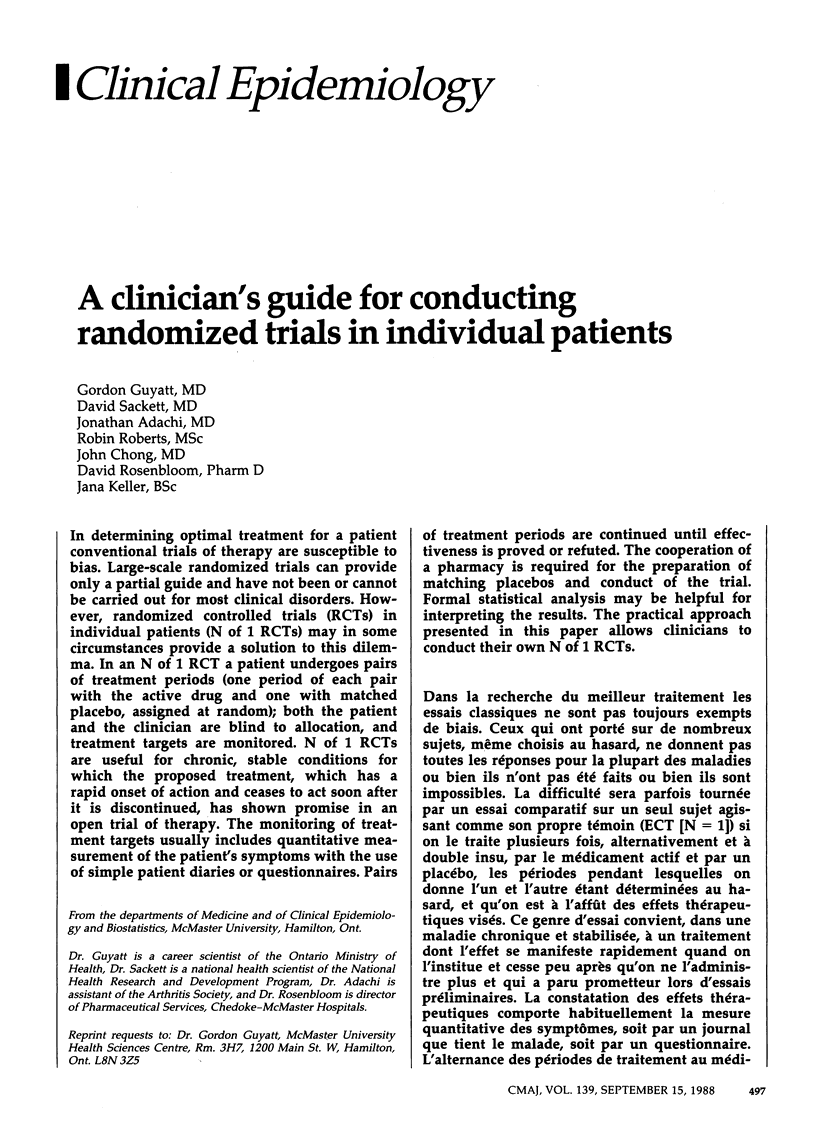
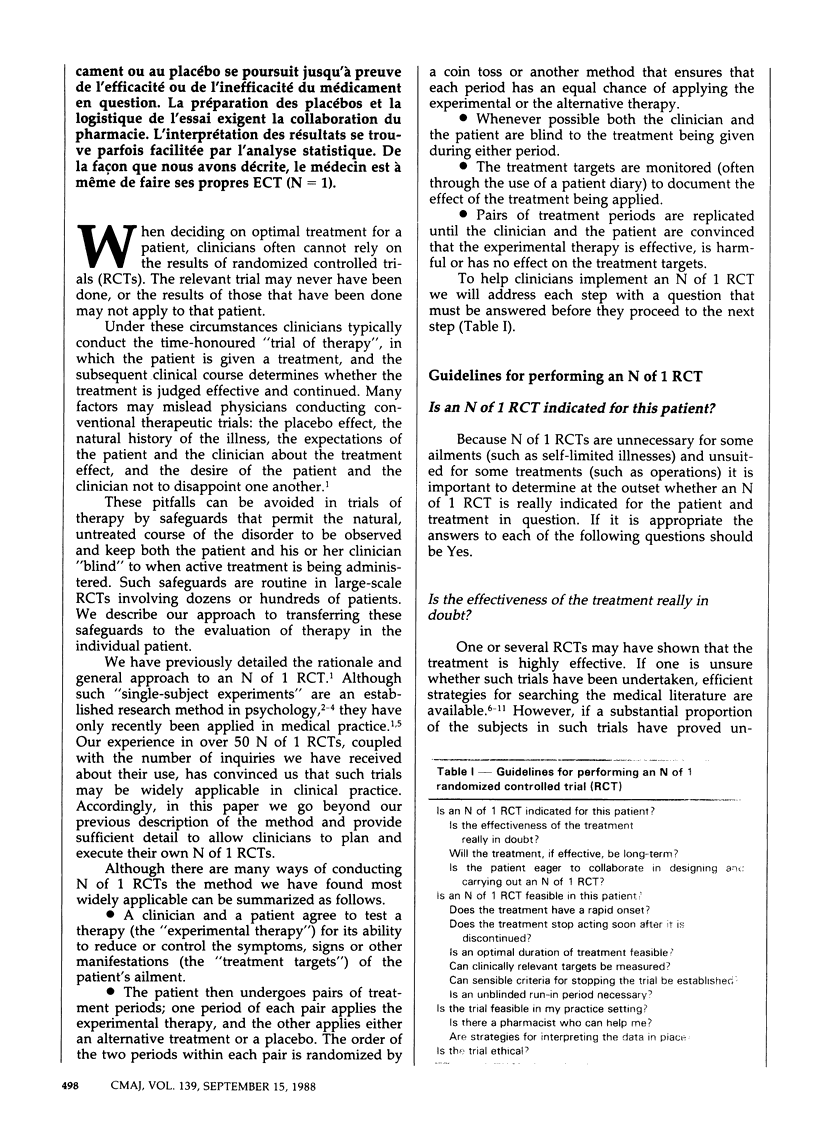
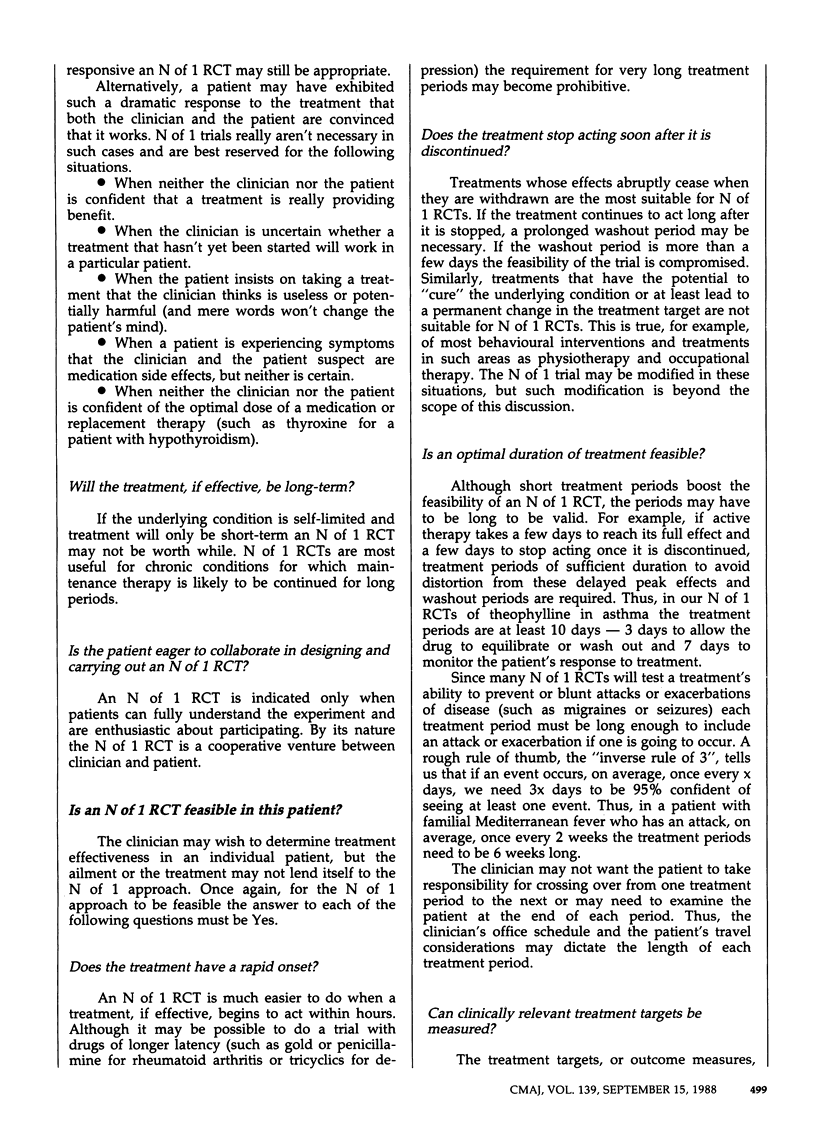
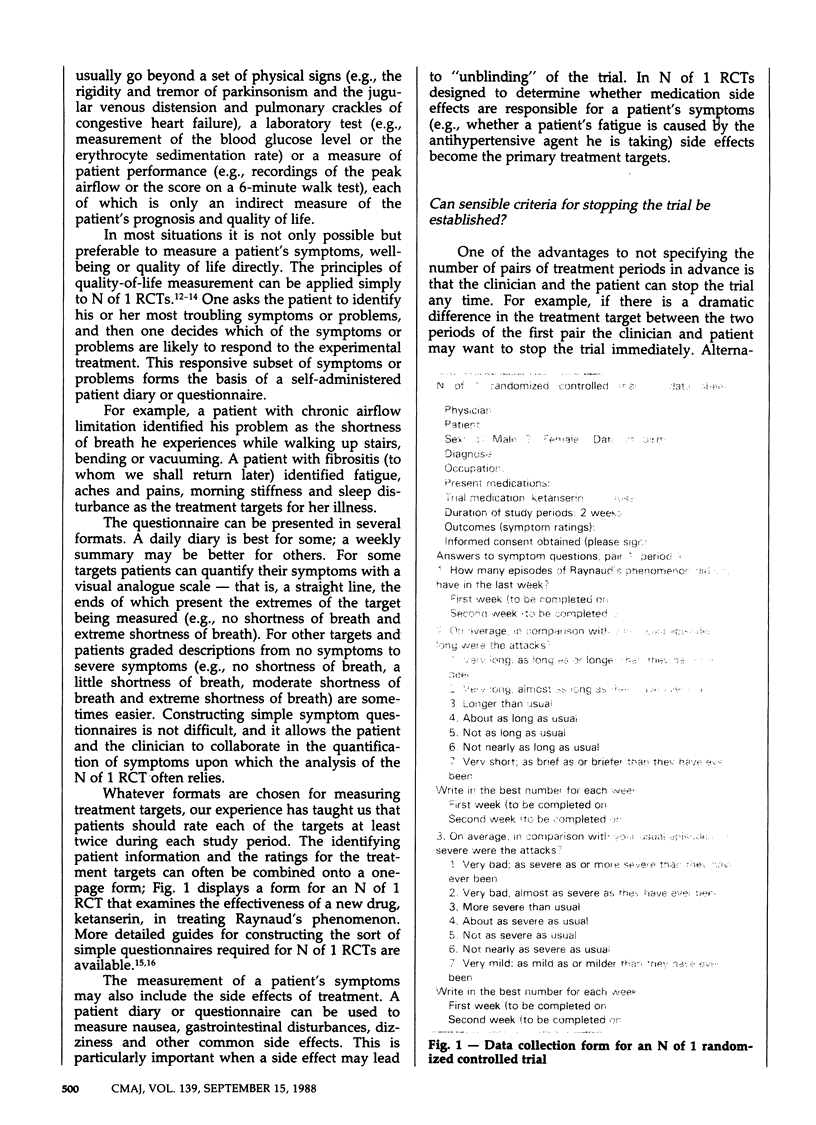
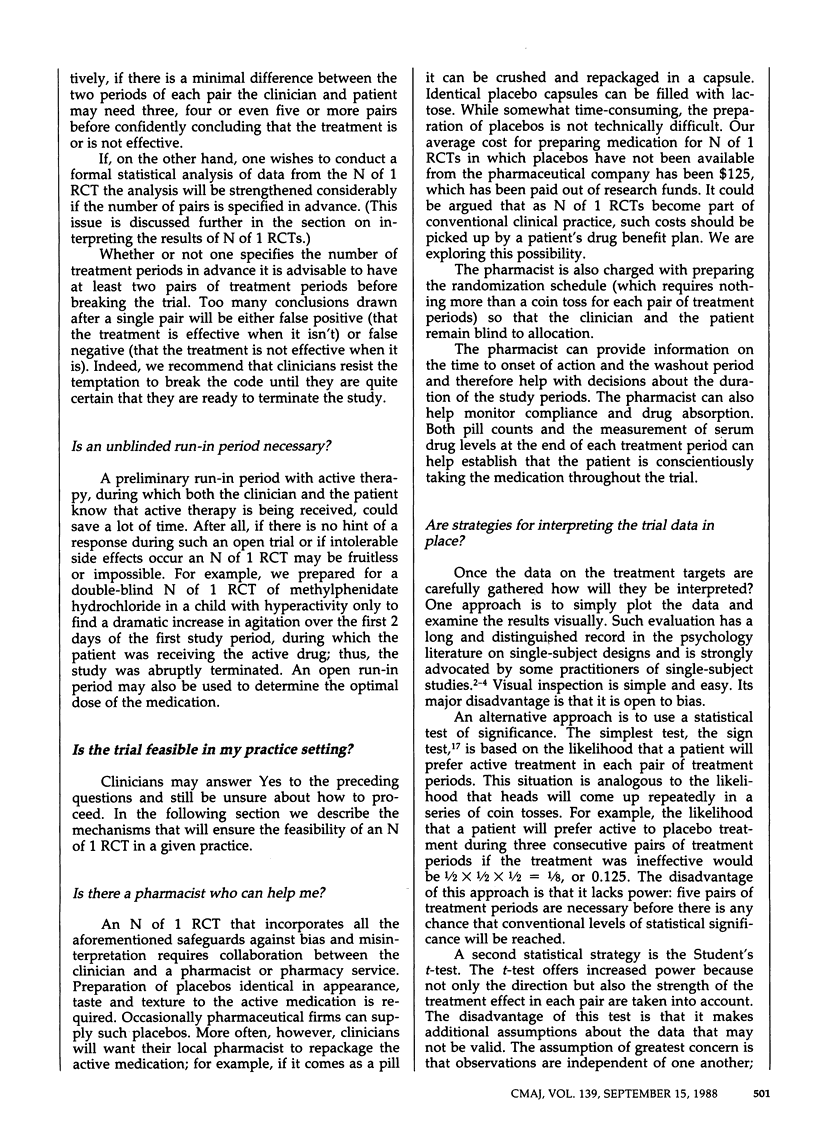
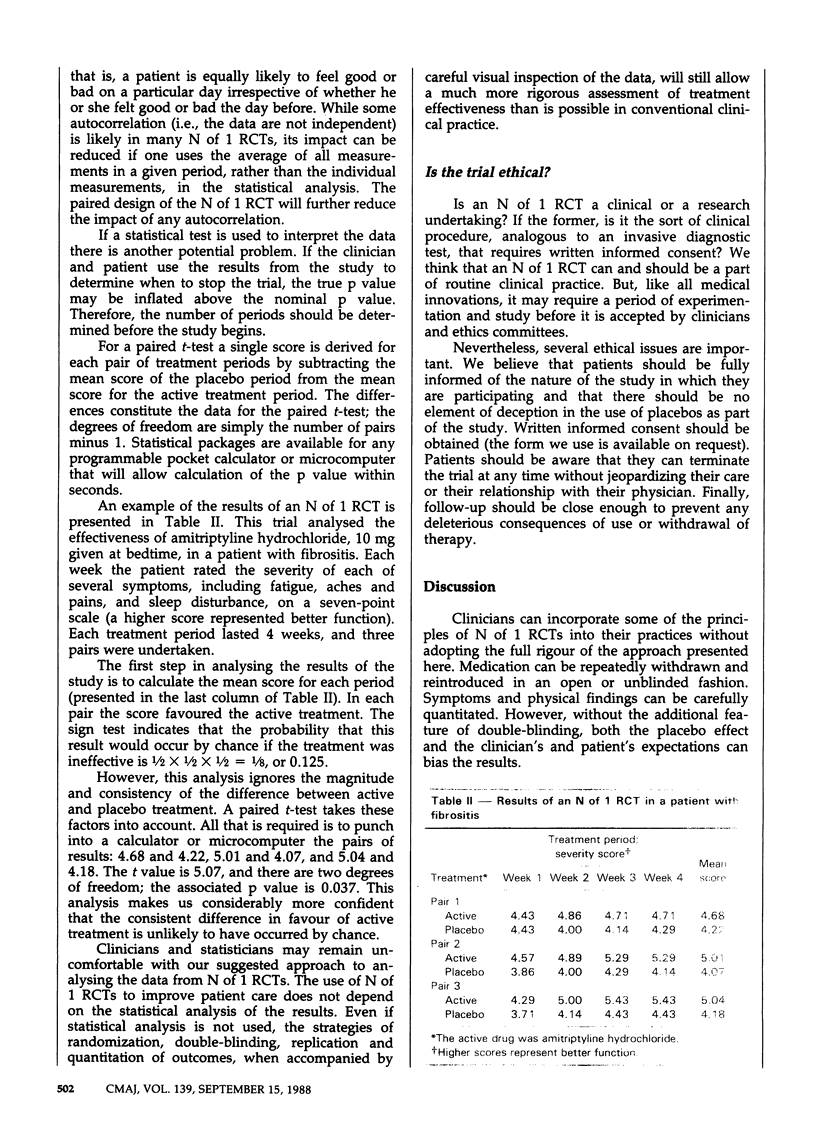
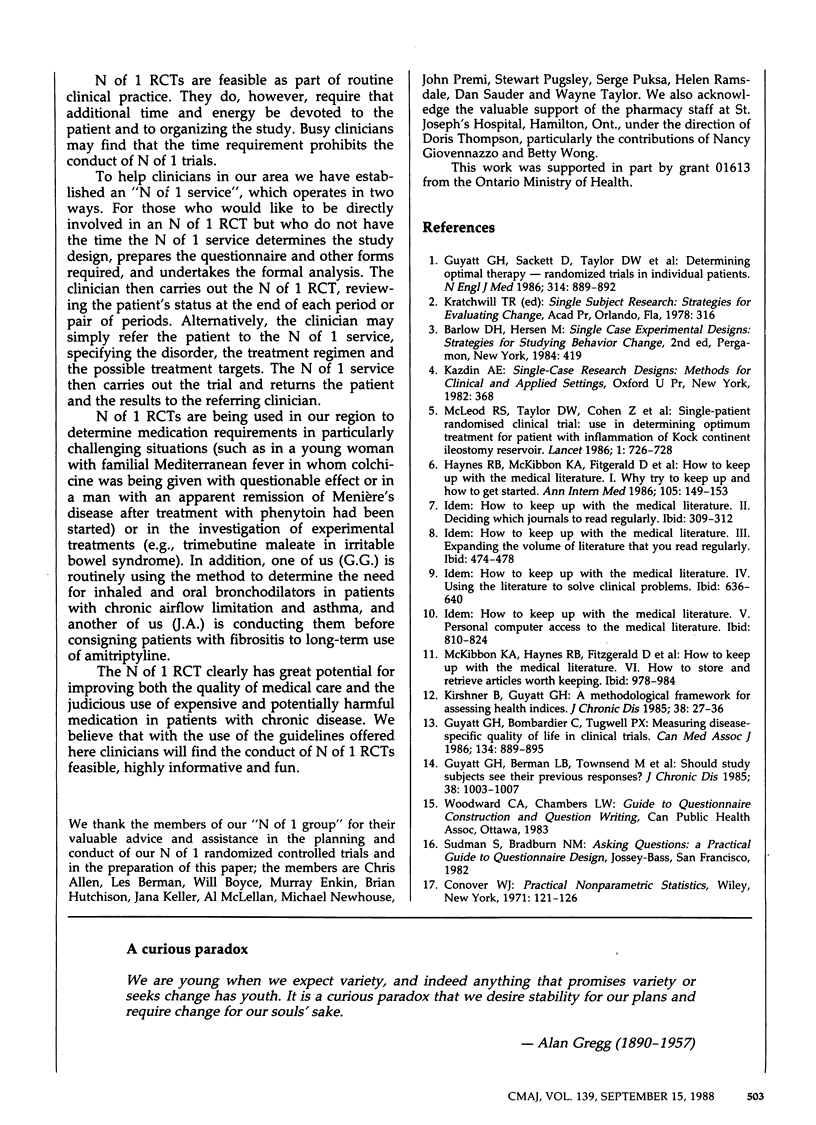
Selected References
These references are in PubMed. This may not be the complete list of references from this article.
- Guyatt G. H., Berman L. B., Townsend M., Taylor D. W. Should study subjects see their previous responses? J Chronic Dis. 1985;38(12):1003–1007. doi: 10.1016/0021-9681(85)90098-0. [DOI] [PubMed] [Google Scholar]
- Guyatt G. H., Bombardier C., Tugwell P. X. Measuring disease-specific quality of life in clinical trials. CMAJ. 1986 Apr 15;134(8):889–895. [PMC free article] [PubMed] [Google Scholar]
- Guyatt G., Sackett D., Taylor D. W., Chong J., Roberts R., Pugsley S. Determining optimal therapy--randomized trials in individual patients. N Engl J Med. 1986 Apr 3;314(14):889–892. doi: 10.1056/NEJM198604033141406. [DOI] [PubMed] [Google Scholar]
- Haynes R. B., McKibbon K. A., Fitzgerald D., Guyatt G. H., Walker C. J., Sackett D. L. How to keep up with the medical literature: I. Why try to keep up and how to get started. Ann Intern Med. 1986 Jul;105(1):149–153. doi: 10.7326/0003-4819-105-1-149. [DOI] [PubMed] [Google Scholar]
- Kirshner B., Guyatt G. A methodological framework for assessing health indices. J Chronic Dis. 1985;38(1):27–36. doi: 10.1016/0021-9681(85)90005-0. [DOI] [PubMed] [Google Scholar]
- McLeod R. S., Taylor D. W., Cohen Z., Cullen J. B. Single-patient randomised clinical trial. Use in determining optimum treatment for patient with inflammation of Kock continent ileostomy reservoir. Lancet. 1986 Mar 29;1(8483):726–728. doi: 10.1016/s0140-6736(86)91112-8. [DOI] [PubMed] [Google Scholar]


